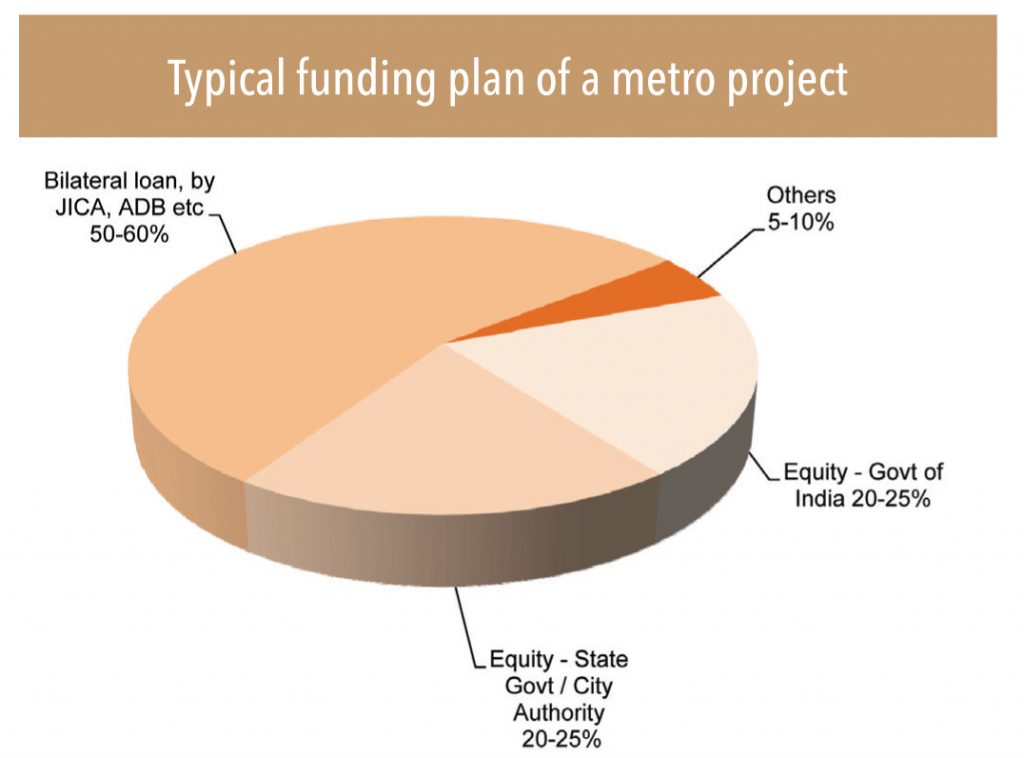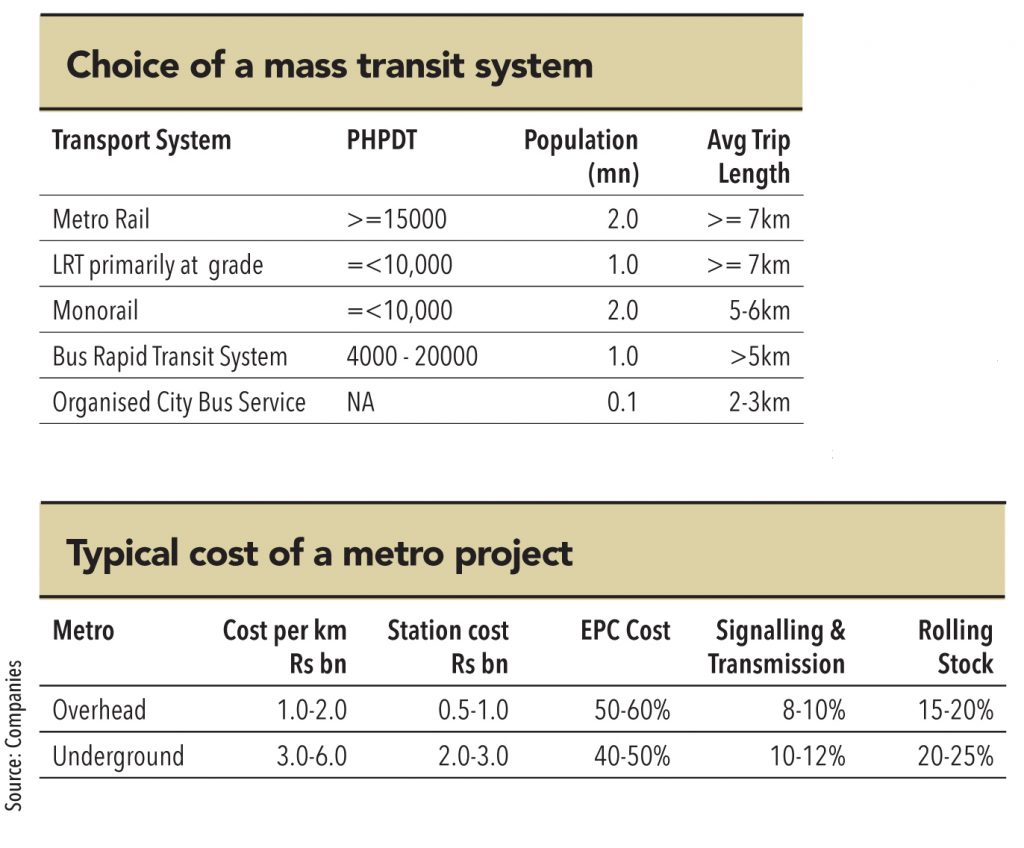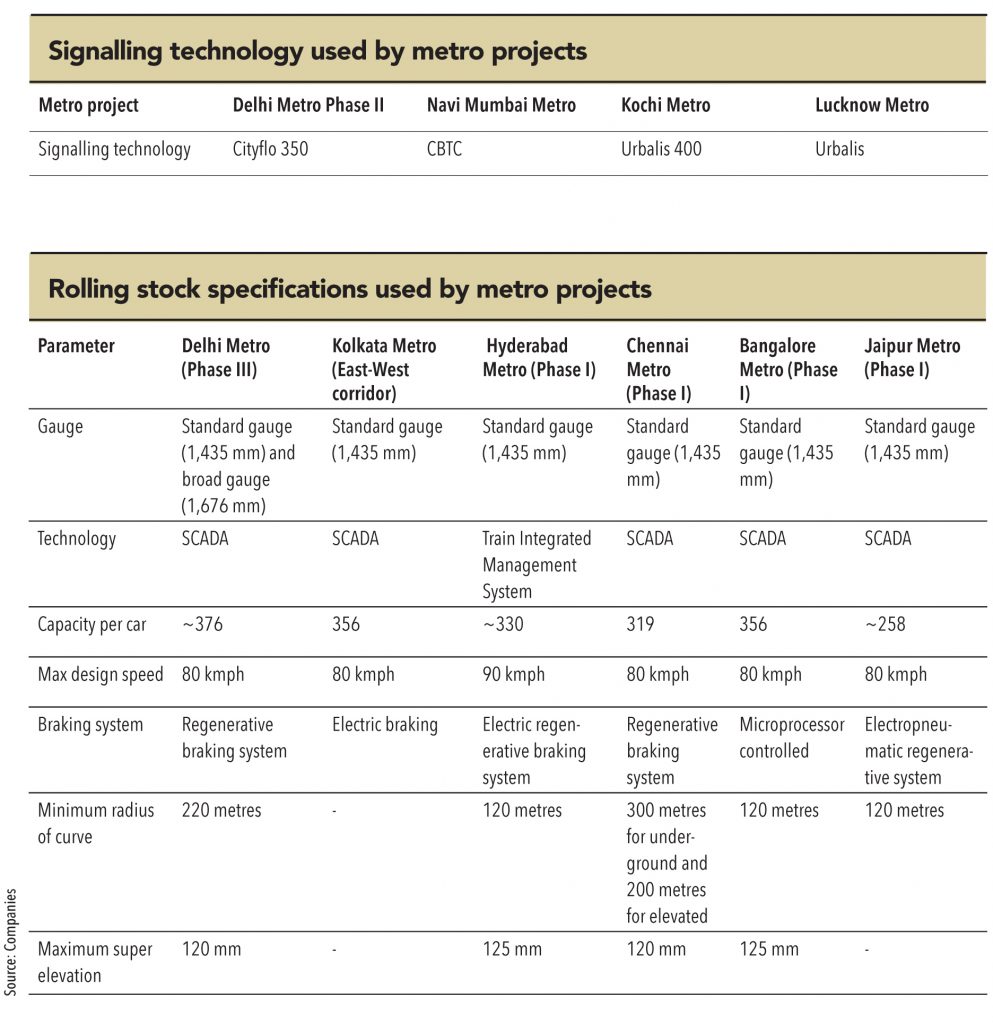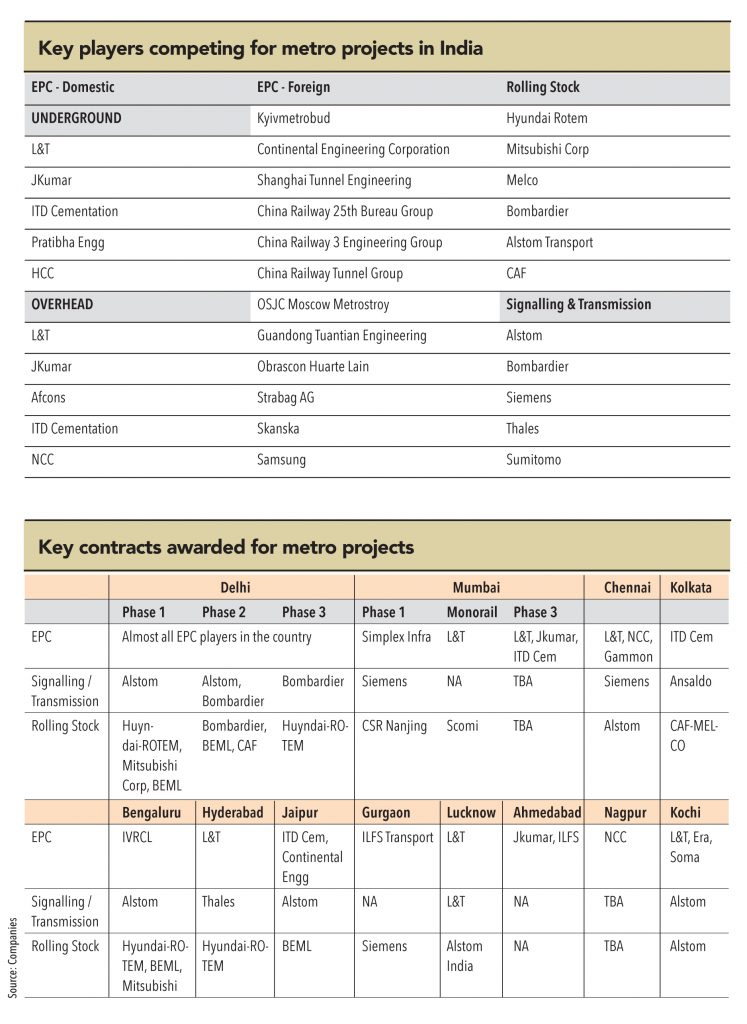Metro projects, unlike any other infrastructure project (like roads, ports or airports) are highly complex to design and construct. Right from the choice of which transport system to use (metro, LRT, monorail), to the design (underground, overhead, at-grade), it is a complex decision process. And it does not end there. Once decided, the executing body needs to decide on the tunnelling methodology, the signalling technology, and the kind of rolling-stock / coaches it needs to procure. This section tries to simplify the process by listing few thumb rules for various stages of executing a metro project – at the risk of over-simplifying!

As a thumb rule, cities with expected PHPDT (Peak Hour Peak Direction Traffic) of less than 10,000 passengers should not opt for a metro system – an LRT or monorail is considered sufficient for this. However, other variables, such as expected growth in the population of the city, average trip length, and status of other infrastructure projects also need to be considered.

The execution cost of a metro network varies from city to city – in fact it varies at different points inside a city. Lots of factors like nature of soil, population density, and status of underground utilities – determine the final cost. However, as a thumb rule, in a city with an average population density, and assuming no cost/time overruns, an overhead metro is expected to cost Rs 1.0-2.0bn per km, while an underground network almost thrice that.
In terms of types of technology used, there are broad classifications under which most metro projects fall:
Signalling/Train Control System:
ATC (Automatic Train Control), Automatic Train Operation (ATO), ATP (Automatic Train Protectin) and ATS (Automatic Train Supervision). Further, ATC has two variants – CBTC (Communication base train control) or RF-CBTC (Radio Frequency CBTC). Cityflo and Urbalis are proprietary signalling systems deployed by Bombardier and Alstom respectively.
Rolling stock:
Post DMRC Phase-2, all metro systems (excl Ahmedabad) have been designed to run on standard guage (1435mm). The control system technology used by most of these fall into two broad categories – SCADA (Supervisory Control and Data Acquisition) or TIMS (Train Integrated Management System).


Subscribe to enjoy uninterrupted access